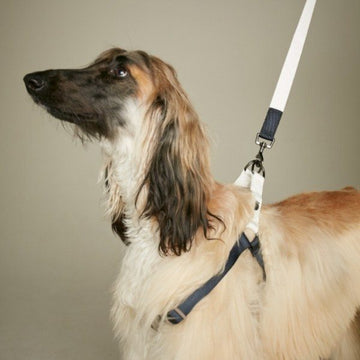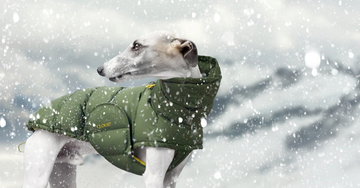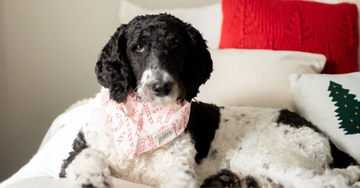There is no one perfect harness that fits all dogs – regardless of body shapes, activity levels or temperaments.
But there is definitely a harness that suits your dog. In this blog post, we will review some of the different harnesses on the market and take a closer look at how a dog's anatomy and behavior play a role in choosing the right harness.
We have dog harnesses for small dogs, medium dogs and large dogs.
Dog anatomy and choosing a harness
Every dog is different, and what works for your dog may not be the best choice for your neighbor's. When choosing a harness, the most important thing is that the pressure is distributed correctly - primarily over the chest and sternum, and never on the neck.
The harness should allow free movement in the shoulders and should preferably be placed around the shoulder blades on the back so that your dog can move naturally and effortlessly.
Different types of dog harnesses
Y-harness
A Y-harness goes far down the dog's body and ensures optimal shoulder freedom and an even distribution of pressure across the chest. This gives your dog the best conditions for a natural and comfortable pull.
Most Y-harnesses have multiple adjustment options, making it easy to adapt the harness to your dog's body shape.
Step-in harness / Dog harness that doesn't go over the head
Step-in harnesses do not go over the head, so if your dog doesn't like it, this type of harness is a good choice. They are usually easy to put on, as the dog simply steps into the harness and then fastens it on the back.
If your dog has a low-set sternum, a step-in harness will often fit really well. Models like Curli harnesses and similar ones are especially popular for small dogs as they are light, comfortable and provide a good fit.
Anti-pull harness
If your dog is pulling, we believe that the best solution is training. But you can make walking easier by combining training with tasty treats and a dog harness where the leash is attached to the front of the chest instead of the back.
When the leash is in front, the dog will automatically be turned slightly towards you, instead of being able to put all his strength into the harness and pull even further forward. This helps to distract and break the pattern of constant pulling.
Anti-pull harnesses should primarily be used as a training tool until the dog has learned to walk properly on a leash. For everyday use, we recommend attaching the leash to the back to ensure the most natural movement for your dog.
Why a new harness?
There may be several behavioral reasons why you need a new harness for your dog:
- Your dog hates wearing a harness and you want to find a model he feels more comfortable with.
- Your dog pulls a lot , and you want to ensure the best comfort during the walk.
- Your dog is a true Houdini , easily slipping out of his harness.
- You've got a new dog and are looking for the first harness.
- The old harness needs an upgrade.
- The old harness has never sat perfectly , and you want a better fit.
No matter which harness you choose, the most important thing is to remember to use it. Even the best and most ergonomic harness won't make a difference if it's not put on, because neither you nor your dog can see it.
My dog doesn't like wearing a harness.
If your dog doesn't want to wear a harness, it's important to first find out why.
For many dogs, this is because they don't like having a harness pulled over their head. If this is the case, we recommend a step-in harness that the dog simply steps into and fastens on the back.
For other dogs, it may be that the harness they have previously used has been ill-fitting or may even have been chewing on it. If your dog associates the harness with discomfort, it may be a good idea to take a short break from the harness . Instead, you can use a wide collar for a period of time and slowly reintroduce the harness with lots of praise and treats so that the experience becomes positive.
Dog harness best in test
As a physical store, we have the advantage of getting direct feedback from our customers and their dogs. All of our products are tested in one way or another – either on our own dogs or through the experiences we gain in dialogue with you. This gives us solid insight into which harnesses work best for most dogs.
However, it is important to remember that no harness is perfect for all dogs – as body structure, activity level and preferences vary from dog to dog.
We've also done some research and compiled the best performing braces in other people's tests. They've received top reviews, and we can only agree that they're some of the best braces on the market.
Dog Copenhagen Comfort Walk Air is an ergonomic harness that is gentle on your dog's back and neck. It has two attachment points – on the back and in front of the chest – and soft, breathable padding for maximum comfort. The harness is easy to adjust and take on and off.
Drew's Dogwear Y-harness is a lightweight and elegant harness with a fit that allows freedom of movement without affecting the neck or shoulders. It combines functionality with a beautiful Scandinavian design and is easy to adjust.
Ideal for dogs who don't like having the harness pulled over their head, the Curli Cord has a snug, comfortable fit, is made from soft, breathable material and has reflective strips for increased visibility.





